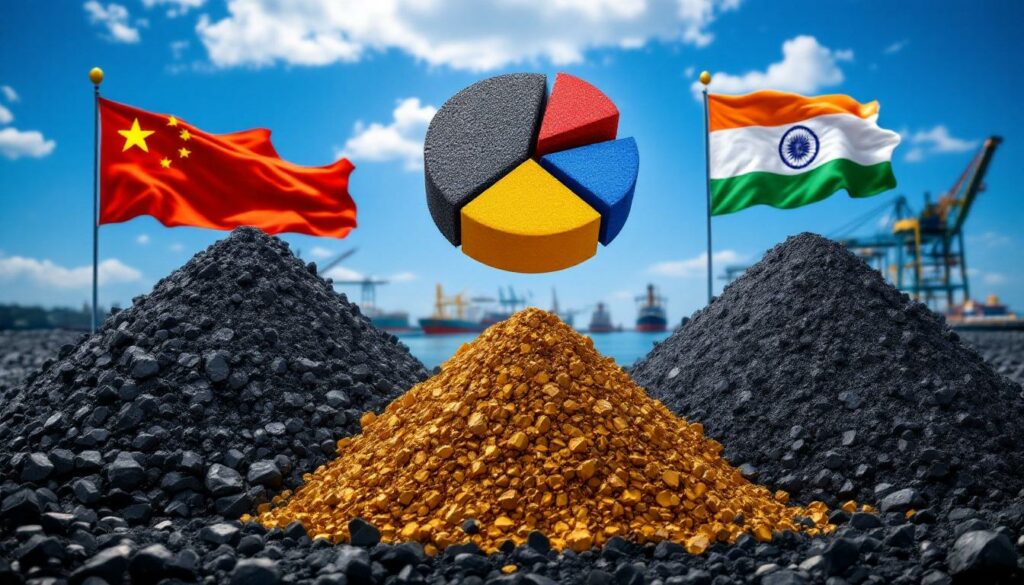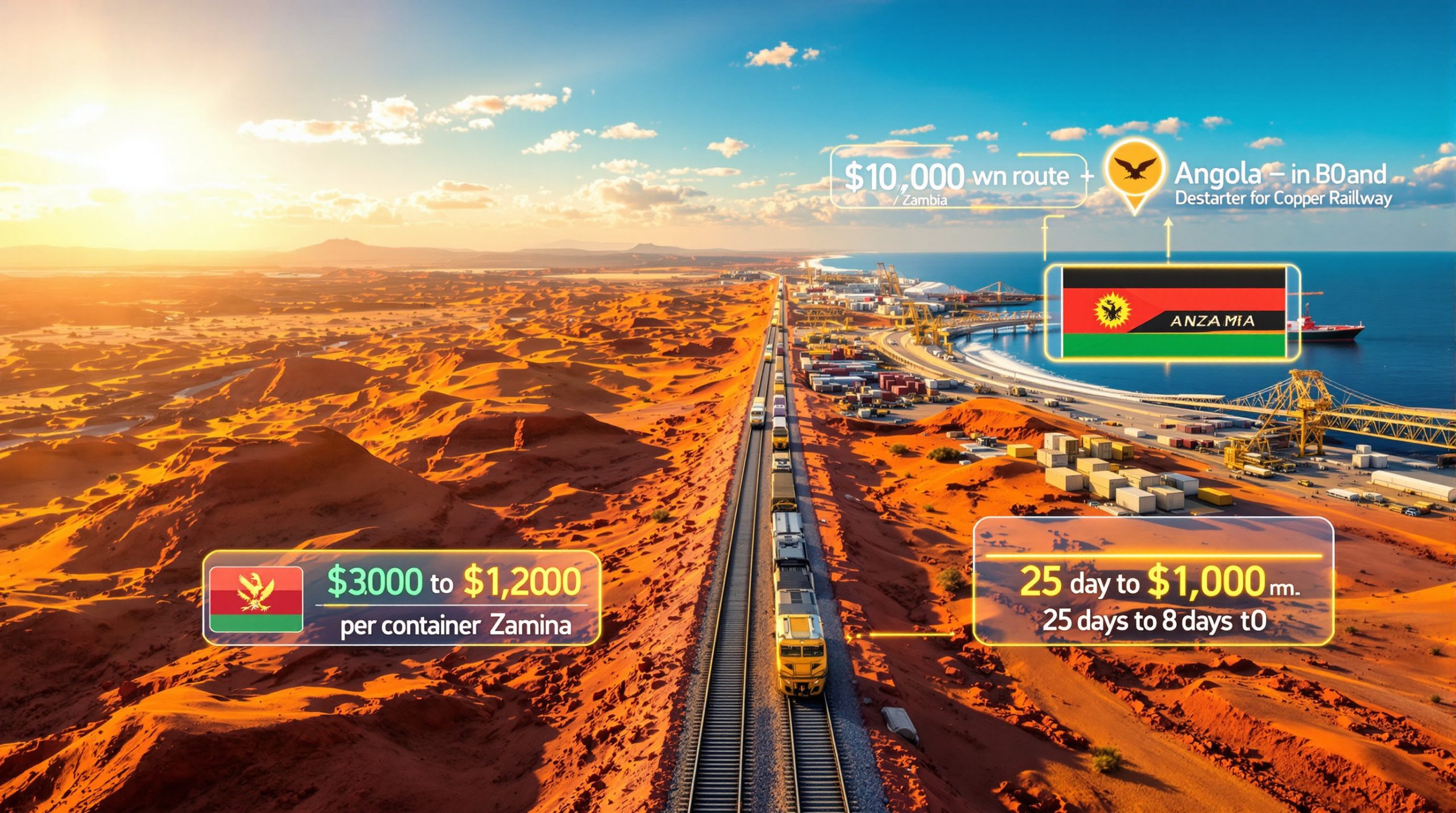Why Are China and India Reducing Indonesian Coal Imports?
As the world's top thermal coal importers shift their purchasing strategies, China and India are significantly reducing imports from Indonesia in favor of higher-energy coal from alternative sources. This fundamental shift in buying patterns is reshaping global coal trade dynamics and creating new opportunities for previously underrepresented suppliers in the top coal-producing countries.
The Economics of Energy Density
The coal market is experiencing a remarkable transformation driven primarily by simple economics. Higher calorific value (CV) coal, while commanding premium prices, has become increasingly cost-effective as global prices decline across all coal varieties.
"Higher CV coal is more expensive but produces more energy for every dollar spent at current prices," explains Vasudev Pamnani, director at India-based coal trader I-Energy Natural Resources. "One million tons of higher CV coal can replace 1.2-1.3 million tonnes or even 1.5 million tonnes from Indonesia."
This replacement ratio demonstrates the substantial efficiency advantage that energy-dense coal provides. When transportation, handling, and energy output are factored into total cost calculations, the economic equation has shifted decidedly in favor of higher-grade alternatives.
Key efficiency factor: Energy-dense coal requires less volume to produce the same energy output, reducing shipping costs, storage requirements, and handling expenses on a per-energy-unit basis.
Industry insight: Coal with higher calorific values typically contains less moisture and ash, allowing for more efficient combustion and greater energy production per ton burned.
Competitive Pressure from Alternative Suppliers
The competitive landscape has intensified with multiple suppliers challenging Indonesia's traditional market dominance:
-
Russian coal has made significant inroads, particularly in China, where Kpler analyst Zhiyuan Li notes that "Indonesian medium and low-calorific thermal coal is struggling to compete with discounted Russian supplies of similar grades."
-
Mongolian coal has achieved remarkable market penetration in China, maintaining price competitiveness through improved production efficiency and proximity advantages that minimize transportation costs.
-
South African exports to India have reached unprecedented levels, capturing record market share during the first five months of 2025. The growth in South Africa coal mining has positioned the country as a significant alternative supplier.
-
Tanzanian coal has emerged as a notable player in the seaborne coal trade since 2022, with increasing exports to both China and India.
Ramli Ahmad, president director of Indonesian miner Ombilin Energi, acknowledges the challenging market conditions: "Indonesian coal could make a comeback if prices of higher grades rise due to the Middle East conflict, but lower CV coal will suffer as long as more energy-dense grades remain competitive."
How Significant Is This Import Shift?
The scale of this market transformation is substantial, reflected in dramatic changes to traditional import patterns and volumes that have defined the coal trade for years.
Current Import Statistics
Recent data paints a clear picture of the rapidly evolving market:
- China's coal imports fell nearly 10% to 137.4 million tons during January-May 2025
- India's imports dropped more than 5% to 74 million tons during the same period
- Indonesian exports to China declined 12.3% year-on-year
- Indonesian shipments to India decreased 14.3%
- Indonesia's total coal exports fell 12% to 187 million tons
These statistics, compiled by analytics firm Kpler and confirmed through Chinese customs and Indian trade data, demonstrate that the shift away from Indonesian coal is not a minor adjustment but a significant recalibration of the market.
Price Trend Analysis
Market dynamics are further illuminated by examining price trends since late 2023:
- Both Indonesian and Australian coal indexes—key benchmarks for Chinese buyers—have been falling since October 2023
- The Australian benchmark has declined at a faster rate than its Indonesian counterpart
- This differential price movement has narrowed the spread between high and low-grade coal
- The narrower price gap has enhanced the value proposition of higher-grade alternatives
Market observation: The convergence of price points between different coal qualities has effectively eliminated Indonesia's traditional competitive advantage of offering lower absolute prices, as buyers increasingly focus on cost-per-energy-unit calculations.
Which Countries Are Benefiting from This Shift?
As Indonesia's market share contracts, several countries are strategically positioning themselves to capture this redirected demand. The ongoing mining industry evolution has enabled many suppliers to improve efficiency and competitiveness.
Primary Beneficiaries
The biggest winners in this market redistribution have been:
-
Mongolia has achieved record market share in China's coal imports, leveraging both price competitiveness and geographic proximity. According to Mysteel analyst Xue Dingcui, "Mongolian coal has remained price-competitive due to higher production and improved efficiency."
-
South Africa has secured its highest-ever share of India's coal imports during the first five months of 2025, based on Indian trade data.
-
Tanzania has increased coal exports to both China and India since 2022, establishing itself as a reliable alternative supplier.
Secondary Beneficiaries
Several other countries have also gained ground:
- Kazakhstan is supplying high-grade coal to Indian buyers seeking quality alternatives
- Colombia has gained market share in India's import mix
- Mozambique has emerged as an alternative supplier to India
- Australia has seen China increasing purchases following earlier import restrictions, boosting Australia energy exports
This diversification reflects strategic efforts by both China and India to reduce reliance on a single dominant supplier while optimizing for both cost and quality.
How Is Indonesia Responding to Reduced Export Demand?
Faced with declining export opportunities, Indonesia's coal industry is pivoting strategically to maintain production levels and revenue streams.
Domestic Market Pivot
Indonesian miners are increasingly targeting the domestic market, with particular focus on:
- Nickel smelters have become preferred customers due to better pricing compared to both power plants and international markets
- Industrial expansion throughout Indonesia is creating new domestic demand centers
- The Indonesian Mining Services Association projects a 3% rise in domestic deliveries this year
According to government data reviewed by Reuters, domestic coal demand is set to account for 48.6% of Indonesia's total coal output in 2025—the highest share in at least a decade. This represents a fundamental restructuring of Indonesia's coal industry, which has historically been export-focused.
Strategic Outlook
Looking ahead, Indonesia faces both challenges and potential opportunities:
- Exports expected to drop by approximately 10% in 2025
- Potential comeback scenario if Middle East conflicts drive up prices of higher grades
- Continued pressure on lower CV coal as long as energy-dense grades remain competitive
- Increased production efficiency in Mongolia will maintain competitive pressure
Industry perspective: Indonesia's coal sector is undergoing its most significant structural transformation in recent memory, with producers recalibrating business models to prioritize domestic consumption over export markets for the first time.
What Factors Are Driving Coal Sourcing Decisions?
The dramatic shift in coal procurement patterns is being driven by several interconnected factors that extend beyond simple price considerations.
Energy Efficiency Considerations
Buyers are increasingly focusing on the total cost of energy rather than the per-ton price of coal:
- Higher CV coal delivers more energy per ton, significantly reducing transportation and handling costs
- Energy density has become a key decision factor as global prices decline
- Cost-per-energy-unit calculations now consistently favor higher-grade alternatives
This focus on energy efficiency represents a maturation of the coal market, with buyers employing more sophisticated total-cost analyses that account for the full lifecycle of coal use.
Supply Chain Diversification
Both China and India are actively pursuing strategies to enhance energy security through diversified sourcing:
- Reduced dependence on single-source imports (Indonesia)
- Strategic relationships with multiple suppliers to mitigate supply disruption risks
- Geographic proximity advantages being leveraged (Mongolia to China)
- Political considerations influencing sourcing decisions (China's re-engagement with Australian suppliers)
The pursuit of supply chain resilience has accelerated following recent global disruptions, with energy security taking precedence over established procurement patterns.
What Are the Long-Term Implications?
The current shift in coal import strategies signals deeper structural changes that will reshape the industry landscape for years to come. Comprehensive understanding of global coal reserves is crucial for predicting future market dynamics.
For Indonesia's Coal Industry
Indonesia faces a period of significant adjustment:
- Structural shift toward domestic consumption
- Potential production adjustments to match reduced export demand
- Opportunity to develop higher-grade coal resources where geologically possible
- Increased competition for remaining export market share
The industry's ability to adapt to this new reality will determine whether Indonesia can maintain its position as a major coal producer, albeit with a different market focus.
For Global Coal Markets
The broader coal market is experiencing a transformation characterized by:
- Greater emphasis on coal quality and energy content
- Continued price pressure on lower-grade coal varieties
- Emerging suppliers gaining market share through competitive pricing
- Potential for market rebalancing if geopolitical events disrupt supply chains
Market projection: The coal trade's center of gravity is shifting away from volume-based calculations toward energy-content-based valuations, fundamentally altering traditional competitive dynamics and supplier relationships.
FAQ: Coal Import Trends in Asia
What defines "high-calorific value" coal?
Coal with higher energy content per unit of weight, typically measured in kilocalories per kilogram (kcal/kg). Higher CV coal generally contains more carbon and less moisture and ash, making it more efficient for energy generation. Indonesian coal typically ranges from 3,800-5,000 kcal/kg, while Australian and South African coal often exceeds 5,500-6,500 kcal/kg.
Why is Mongolia gaining market share in China?
Mongolia offers a combination of advantages including competitive pricing, improved production efficiency, and geographic proximity that significantly reduces transportation costs for Chinese buyers. Additionally, land-based imports from Mongolia avoid potential shipping disruptions that can affect seaborne coal from other suppliers.
How might Middle East conflicts affect coal markets?
Geopolitical tensions could disrupt shipping routes or supply chains, potentially driving up prices for higher-grade coal that typically travels longer distances to reach Asian markets. This scenario could make Indonesian coal more competitive again, particularly if shipping insurance and freight rates increase for vessels navigating near conflict zones.
What percentage of Indonesia's coal production goes to domestic use?
According to government data, domestic coal demand is projected to account for 48.6% of Indonesia's total output in 2025, the highest share in at least a decade. This represents a fundamental shift from Indonesia's historically export-focused coal industry to one increasingly oriented toward meeting domestic energy and industrial needs.
Disclaimer: Coal market projections involve numerous variables including geopolitical factors, policy changes, and economic conditions that can rapidly alter market dynamics. Readers should consider these analyses as insights into current trends rather than guaranteed future outcomes.
Ready to Stay Ahead of Major Mineral Discoveries?
Gain immediate access to actionable insights on ASX-listed mineral discoveries with Discovery Alert's proprietary Discovery IQ model, which transforms complex market data into valuable investment opportunities. Discover why historic discoveries can generate substantial returns by visiting the Discovery Alert discoveries page and begin your 30-day free trial today.




